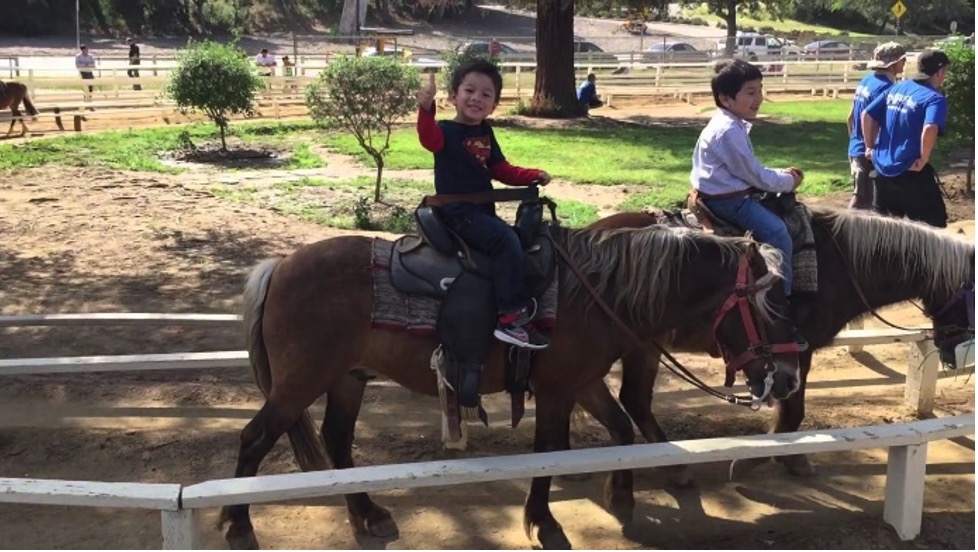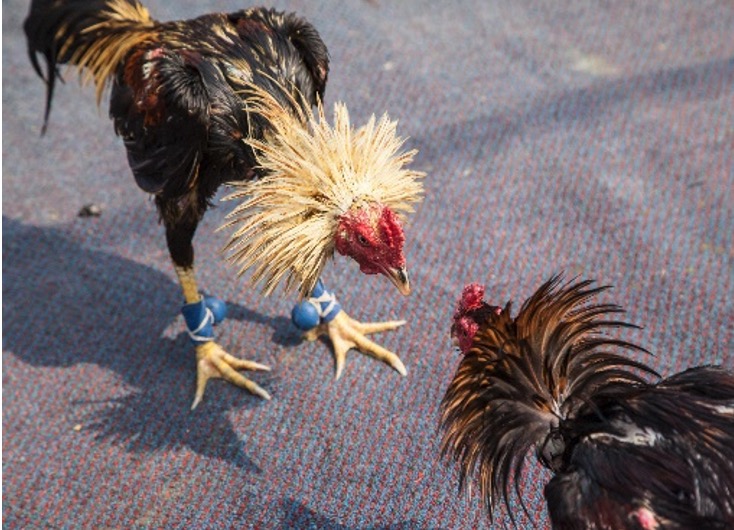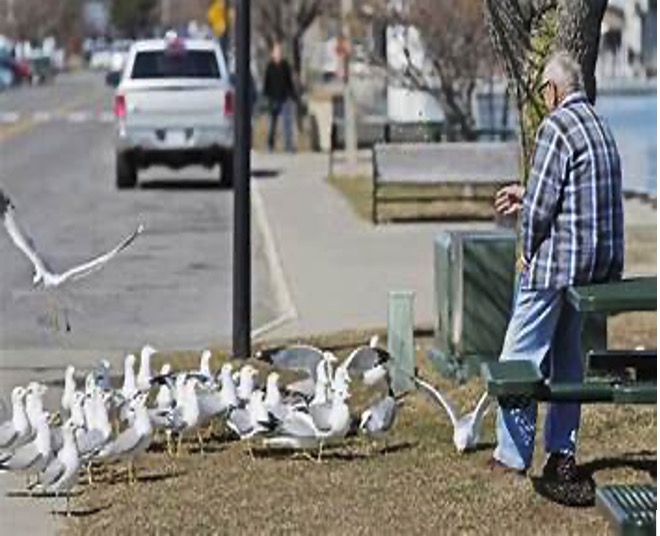Comments
ANIMAL WATCH - If we wish to have a “humane” society for animals and people in the future of Los Angeles, children in families at every income level and from all national origins must have equal opportunity to more than electronic learning about animals and must experience them up close—touching them and being touched by them at an early age. Although many will disagree, the Griffith Park pony rides and petting zoo was one of these few treasured opportunities in L.A.’s concrete jungle, and it was a family experience valued by the children and parents.
The pony rides were not “entertainment” in the way they have been recently interpreted by animal activists, but for children—especially in the inner city—they were the introduction to a new world of understanding and affection for a friendly animal and one they will undoubtedly remember throughout their lives. There is nothing more joyous than a child who was apprehensive about being placed on a pony and after one ride (with the parent still holding him/her) seeing them smiling and reaching to hug it.
These are the reasons the L.A. pony rides were so treasured by Angelenos who had the same experience as a child and why they wanted to relive that experience with their own children and see that same delight. (I understand that some people feel animals should not be used for any purpose and respect their right to that conviction, but much of society relates a pony ride as their first love of an animal.)
Griffith Park Pony Rides and Petting Zoo was not a shoddy place, where the animals were just “equipment.” It first opened in 1948 and is a large area with several acres of land and a petting zoo. However, in the past few years as the animals grew old (ponies were 20 to 30 years old) the new owner, Steven Weeks, who took over a few years ago, reportedly was not filing required documents with the City and keeping veterinary reports and paperwork up-to-date. This opened the door for an on-line petition by a San Diego activist to close down the facility. But it is also the responsibility of Recreation and Parks to send reminders when records are overdue, and that was not done either. In fact RAP apparently had no intention of pursuing any action, because they renewed his lease—and later rescinded it in view of the accusations made in the petition.
Most City residents have already read the details of these documents and recall that they did not support the allegations of cruelty or neglect made by the activist and denied by owner Steven Weeks. The veterinary expert who examined them indicated some needed dental work, care for saddle sores and hoof trimming, and that water troughs should be at a lower level to ease their ability to drink.
There was also the issue of four ponies that had died—but none from neglect, the expert determined—and six had been retired to other facilities, but the City was not notified for months, according to the report.
Two L.A. Animal Services officers told me last year that they regularly visited and inspected the Griffith Park pony rides, and both the animals and the facility were old but there were no violations that would cause it being shut down and no animal was in danger.
A VIDEO IS WORTH A THOUSAND WORDS

Here is a video by a parent, taken in winter 2021, where conditions can be viewed, and a personal impression garnered. The rides were closed down in December 2022.
It now appears that there is no intention or possibility to restore the pony rides or petting zoo to this location, as the Department of Recreation and Parks is already moving forward with its new look and “new use” for this land and undoubtedly it will be something that generates more income.
NO INDICATION NEW FACILITY WILL INCLUDE ANIMALS AND THIS MATTERS
However, the fact that the Department of Recreation and Parks has contracted with a designer/architect that does not have any noted design of animal facilities on its website may indicate that its “new use” will not focus on this aspect and, although it may contain walking trails, it is apparently devoid of any introduction or bonding opportunities for animals and children, thus far.
The selection of PlaceWorks, Inc., a Santa Ana firm for architectural and space design does not mention any involvement with animals or the intent to provide the opportunity for children to touch, small and emotionally engage with the animals so that compassion and empathy can be developed.
Efforts to abolish any live-animal activity in Griffith Park should not be allowed to dictate policy in Los Angeles by threats and emulate the nightmare caused by Animal Defense League (ADL) from 2008 to 2010, which shaped the “No Kill” shelters and the horrific overcrowding and resultant cruel conditions which remain today.
This location should not be used for adoptions or “rescue,” as some have suggested, because that is the duty and responsibility of Los Angeles Animal Shelters and certainly not intended to be profitable. We need to create places and spaces for children to learn compassion and empathy—not more venues to sell dogs and cats.
RAP MUST REMEMBER THE CITY’S COMMITMENT TO ANIMALS, CHILDREN AND LEARNING
Los Angeles must continue to provide opportunities for education about animals at this location—such as those provided by the Griffith Park Pony Rides and Petting Zoo, which allowed children to touch and caress these “gentle giants.” These ponies were kind and patient animals which offset the anxiety of the difference in size and power, and allowed the child feel in charge and responsible, with coaching by parents, for the kind treatment of the animal. Although brief, this type of encounter and the bonding that quickly develops are invaluable to children and do much to shape their future confidence.
Empathy for living creatures cannot come from electronic devices. It takes the physical, tactile stimulation of interacting with another being, that—like the child—can feel pain and show affection.
IMPORTANT TAKEAWAYS FROM THIS
Compassion cannot be learned in a vacuum, and mere exposure to a park area, does not replace the physical presence of animals. It will not teach children that even though they are large, horses and other animals still appreciate gentleness and do not need to be whipped or gouged in their ribs with spurs to interact with them. Compassion is learned—not genetic. Gentle interactions with all types of animals build character, erases fear of the unknown and develops an affinity with all life, including trees and plants—which children observe being eaten by animals and providing the nutrients for survival.
This space also should not be used for “rescuing” or sheltering animals because that is the job of Los Angeles Animal Services and it needs to perform its duties. (with a huge budget provide for that purpose.)
Children should not believe that they have to “do something” during every encounter with an animal. Sometimes the greatest kindness to both is just observing or leaving so that there is no possibility of a negative encounter.
While some wildlife contact (ponds with ducks, etc.) can be exciting to a child, it is usually also very fleeting. There must also be gentle animals that can be stroked, hugged, petted and a bond formed.
CITY CHILDREN OFTEN EXPERIENCE CRUELTY TO ANIMALS WITHOUT A RESOURCE TO UNDERSTAND IT


Children in Los Angeles often live in rental units devoid even of yards, but are exposed to or live in neighborhoods where cruelty to an animal is recognized as power. They may also observe cockfighting and dog fighting in a local basement or backyard. If they have established a bond with some animal, they can decipher the cruelty of these activities. If not, often they just join the crowd in order to “belong.”
In Los Angeles, thousands of children will be taken to the February 2024 “UNLEASH THE BEAST” Rodeo at the Crypto.com Arena in Los Angeles as a family event and will watch animals tripped, tackled, poked, roped, kicked and thrown to the ground while their parents cheer in delight. This is considered a “cultural tradition” which our legislators want to honor, but inflicting pain on any living creature for “entertainment” should not be condoned and encouraged by any governmental body.
Many children do feel the pain of the animals but they will quickly learn to repress it because this is an event that is supposed to be “enjoyed”—expressing feelings of sympathy may cause boys to be called “weak” and many may decide that they cannot admit their tenderness and counter that by becoming even more cruel to prove the that they are a “man.”
Children do not know what they have not seen themselves. They have no way to evaluate the effects of brutal blood sports as forced and cruel, and not something the animals would do naturally. They need to learn that horse racing is based on whipping the animal to run faster than it would ever do, other than when escaping a predator or other harm.
Compassion and empathy for animals is not learned in a vacuum of rhetoric nor by visualizing electronic animal depictions, but from direct contact with various species—from horses, cattle and large animals, to reptiles and with the birds, bees and butterflies that travel thousands of miles to pollinate the earth, the tiny creatures that scurry and slither around on the ground balancing the environment and being taught to understand the similarities they share with human, including fear and pain. (There's Growing Evidence That Insects Feel Pain, Just Like Us.
COMPASSION -- IT IS NEVER TOO EARLY OR TOO LATE


I remember a very touching story told by GretchIn Wyler, the beloved founder of the Ark Trust and the Genesis Award for animal protection, about a famous designer of women’s clothing who told her that late in his life, after years of creating clothing and accessories for the theatre and celebrities using fur, feathers and leather, he was on his way home on a very cold and stormy evening in N.Y when he stepped out of a taxi and there was a small bird in the gutter, obviously cold and suffering and struggling to survive in the water pushing it toward the sewer opening. He was so touched by the plight of the tiny creature that he picked it up, wrapped it with his scarf and took it home to get it warm and fed. When he was inside with it and helped it dry off, he realized that this could have been one of the creatures killed and plucked for one of his designer fashions. He was so filled with the reality and remorse that it changed his entire clothing line and motivated him to campaign against using animals in any clothing or accessory line.
This is why it is important that there are places where children and adults who are unfamiliar with the magic of nature—especially in this electronic age—can hold an/or touch or just observe animals. With a knowledgeable person present to provide explanations and having their questions answered, they can learn at any stage of life that kindness, gentleness and respect is appreciated by all living beings.
(Phyllis M. Daugherty is a former Los Angeles City employee, an animal activist and a contributor to CityWatch.)






